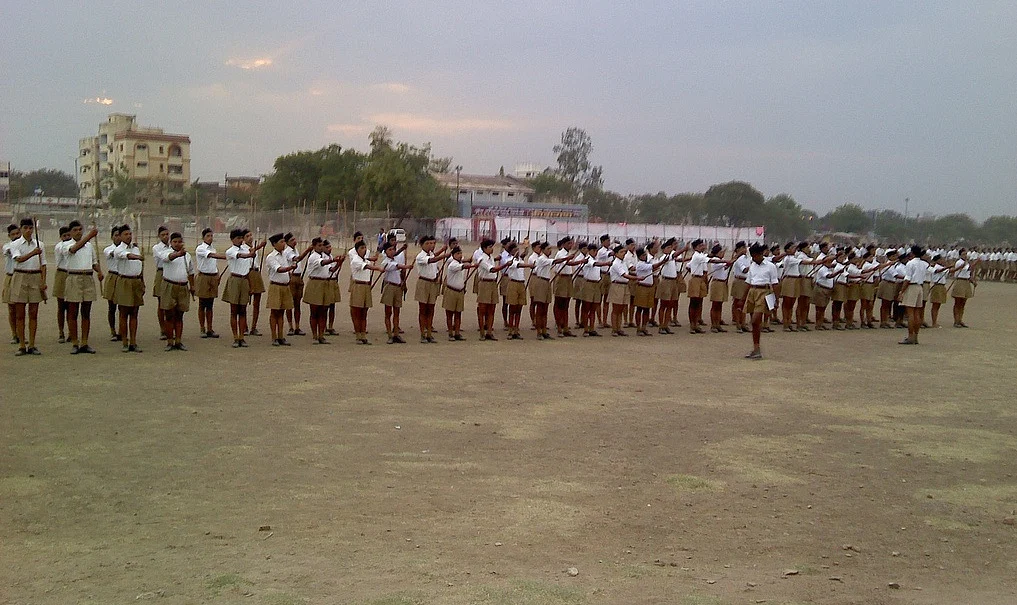25 years of Babri Mosque demolition: Decoding the rise of Hindutva and the way to stop it
It is imperative to evolve a programme which aims at addressing exploitation and discrimination in all forms, which is sensitive to pluralistic Indian traditions and rejects all forms of communalism

While reflecting on the momentous events of 25 years ago, one must keep in mind that we are now living in the era of post-truth. These ‘post-modern’ times are characterised by universal retreat of modern values. Today we ought to be more proud than ever of the far-sightedness of the leaders of our national movement, who gave us an idea of India, which focusses on the real issues of people. This idea is rooted in real historical experiences of Indian people and hence is respectful of diversity. It has democratic and forward-looking ethos. It expanded the dictionary definition of ‘secular’ to signify equal respect for all religious traditions—sarva-dhrama-sambahv. It also ‘knows’ that any progressive change in Indian society will come in accordance with the genius of its traditions.
Given its leading role in the freedom movement, this idea came to be identified with the Congress but far from being a merely ‘Congress idea’, it was shared by all democratic and progressive forces, including those sharply critical of Congress. It also had a very palpable economic policy content and social orientation. This comes out in bold relief in the resolution of Karachi Congress (1931), which committed Congress and government of independent India to planned economic development, regulated working hours, abolition of untouchability, gender equity and civil liberties. Significantly, this resolution was drafted By Nehru and Bose and moved by Gandhiji, while Patel was presiding over the proceedings. In this way, this resolution signified consensus (the differences and personal likes, dislikes notwithstanding) of all trends within the Congress. Naturally, after Independence, self-reliance through creation of industrial infrastructure and social democratisation through legal and political process got the top priorities.
Ironically for RSS, in this Hindu-majority country, there have not been too many buyers of its brand of Hindutva. Even the best performance of BJP (2014) could gather only 31 per cent of the popular vote, and a lot of it was due to the lure of ‘development’ and personal resources and appeal of Narendra Modi. The fact, however, remains that 2014 was a spectacular culmination of the strategy symbolised by Ayodhya 1992.
To the credit of RSS, it has never hidden its agenda of striving for a Hindu nation. The BJP has been allowed to put the controversial issues on the ‘back-burner’ strategically; but it has not shied away from its real political agenda. Advani and other leaders made it clear repeatedly that the Ayodhya agitation had never been to “just build” a Ram temple. It was a device to propagate Hindutva as an alternate national vision to what was adopted and pursued post-Independence.
And yet, in many a post-facto appraisals, the ‘calendar of events’ leading to the 6th of December starts only with Advani’s ‘yatra’ in 1990. RSS had been exploring the potential of ‘Ramjanam Bhooomi liberation movement’ for many years preceding the ‘yatra’. The riots in Meerut and other places were connected with this ‘exploration’. It was on April 8, 1984 that the ‘Dharma-Sansad’ organised by VHP in New Delhi, passed a resolution for the ‘liberation’.
Looking back, let us once more remind ourselves that in a multi-religious country like India, no formation can ensure the democratic rights for the minorities without ensuring the faith and support of the majority community for itself.
The failure to appreciate the emotional chords amongst ordinary Hindus touched by the Hindutva wave has helped RSS/VHP/BJP immensely in their project. The contempt for anything Hindu —so typical of many leftists, liberals and radicals is actually part of the problem. Participating in the present day political discourse on ‘cow-protection’; many left and liberal intellectuals put in considerable efforts to ‘prove’ the consumption of beef amongst ancient Indians. They assume that the Hindus after ‘ancient’ period somehow forfeited the right to develop new dietary preferences and taboos, and to go beyond the beliefs and practices of their ancestors.
Also, the rise of Jihadism has contributed to Hindu anxiety in no small measure.
Hindutva of RSS can not be confronted merely by OBC or Dalit politics. BJP can claim to have put the OBC leaders in leading positions including that of the PM! With the sole exception of Lalu Prasad Yadav, all the OBC leaders have directly or indirectly collaborated with BJP, and just after the Gujarat riots in 2002, Mayawati had no compunction in campaigning for BJP.
It is imperative to evolve a genuinely nationalist programme which is aimed at addressing exploitation and discrimination in all their forms, which is sensitive to pluralistic Indian traditions and confident enough to reject all politics of hurt sentiments, and all forms of communalism. Only such a programme can take on the juggernaut of Hindutva in the political and cultural realm. The issues of cultural identity also can be addressed democratically only within the framework of politics that focus on the materialities of social systems.
Follow us on: Facebook, Twitter, Google News, Instagram
Join our official telegram channel (@nationalherald) and stay updated with the latest headlines
- BJP
- Ayodhya
- Babri Masjid
- 1992
- December 6
- karsevaks
- Babri mosque
- RSS cadres
- Babri Masjid demolition
- Ram Temple Movement
- Babri mosque-Ram temple controversy
